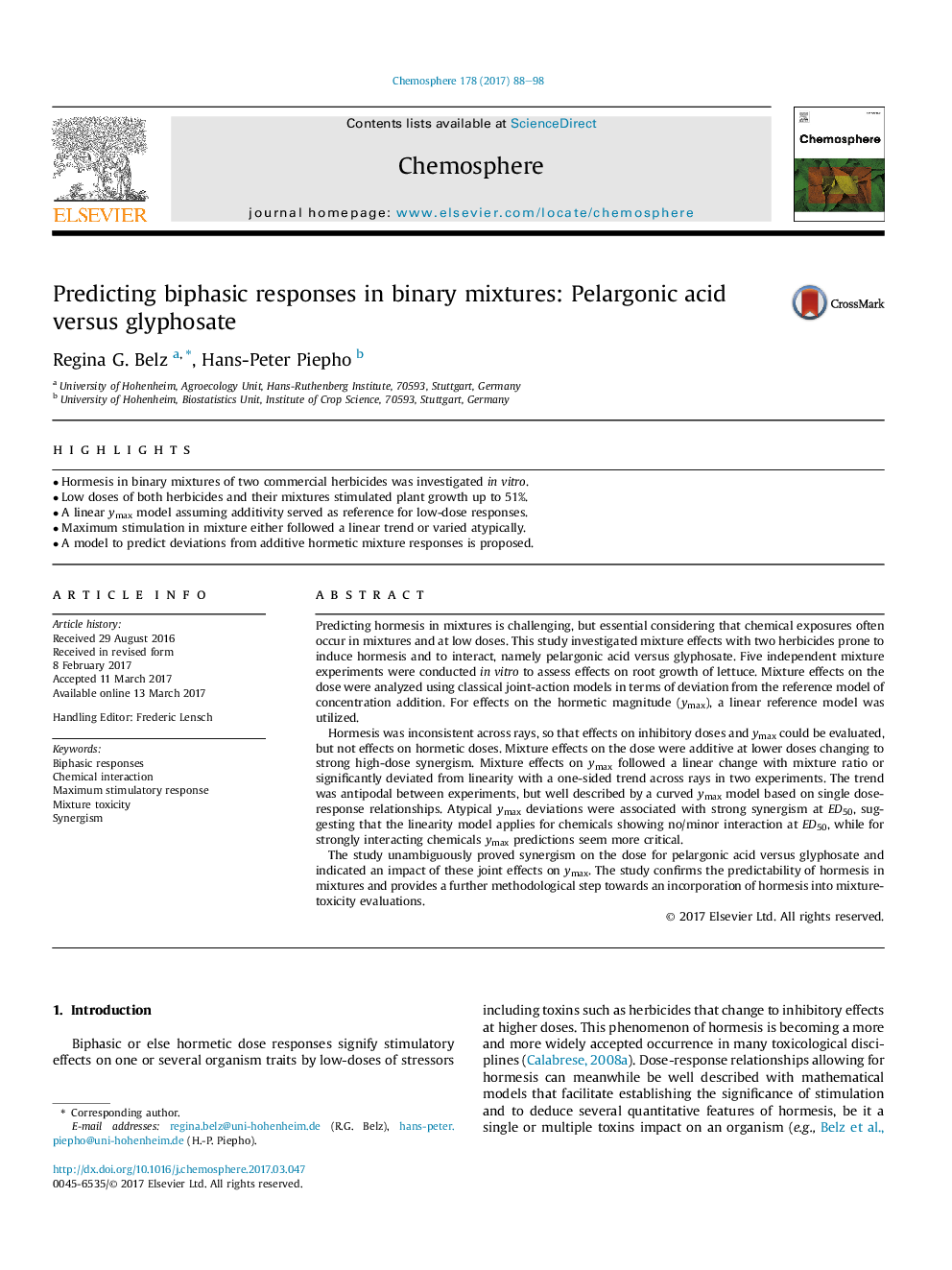| کد مقاله | کد نشریه | سال انتشار | مقاله انگلیسی | نسخه تمام متن |
|---|---|---|---|---|
| 5747245 | 1618793 | 2017 | 11 صفحه PDF | دانلود رایگان |
- Hormesis in binary mixtures of two commercial herbicides was investigated in vitro.
- Low doses of both herbicides and their mixtures stimulated plant growth up to 51%.
- A linear ymax model assuming additivity served as reference for low-dose responses.
- Maximum stimulation in mixture either followed a linear trend or varied atypically.
- A model to predict deviations from additive hormetic mixture responses is proposed.
Predicting hormesis in mixtures is challenging, but essential considering that chemical exposures often occur in mixtures and at low doses. This study investigated mixture effects with two herbicides prone to induce hormesis and to interact, namely pelargonic acid versus glyphosate. Five independent mixture experiments were conducted in vitro to assess effects on root growth of lettuce. Mixture effects on the dose were analyzed using classical joint-action models in terms of deviation from the reference model of concentration addition. For effects on the hormetic magnitude (ymax), a linear reference model was utilized.Hormesis was inconsistent across rays, so that effects on inhibitory doses and ymax could be evaluated, but not effects on hormetic doses. Mixture effects on the dose were additive at lower doses changing to strong high-dose synergism. Mixture effects on ymax followed a linear change with mixture ratio or significantly deviated from linearity with a one-sided trend across rays in two experiments. The trend was antipodal between experiments, but well described by a curved ymax model based on single dose-response relationships. Atypical ymax deviations were associated with strong synergism at ED50, suggesting that the linearity model applies for chemicals showing no/minor interaction at ED50, while for strongly interacting chemicals ymax predictions seem more critical.The study unambiguously proved synergism on the dose for pelargonic acid versus glyphosate and indicated an impact of these joint effects on ymax. The study confirms the predictability of hormesis in mixtures and provides a further methodological step towards an incorporation of hormesis into mixture-toxicity evaluations.
Journal: Chemosphere - Volume 178, July 2017, Pages 88-98
